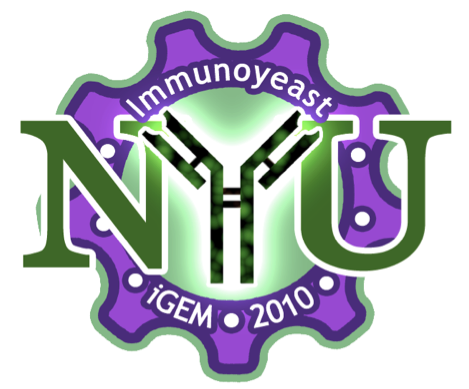Team:NYU/Project
From 2010.igem.org

| Our goal is to use the tools of synthetic biology to improve the field of antibody engineering. To do this, we have decided to learn from our own immune system by employing its own strategies in an engineered strain of yeast. This yeast will be capable of screening a library of antibodies against a target antigen, recombining the antibody gene in vivo and then either secreting or surface displaying the resulting antibody protein for a variety of purposes. Our hope is to demonstrate the feasibility of using the yeast cell not only as a vessel for antibody discovery but as a streamlined processing unit that can discover and begin production of new antibodies - all in one test tube! This will reduce the cost and time required for antibody discovery and enable many new technologies in this field. | |
Project Details
Our game plan for this year's competition is to construct an easy-to-use yeast strain capable of intracellular antibody discovery. The current dominant mode of antibody discovery using microbes requires cellular surface display and high-throughput fluorescent screening. Instead of using this method, we wanted our cells to be able to sense when the antibody they are translating will bind the target antigen. Using a modified form of the yeast two-hybrid screening system, the yeast cells will sense the amount of antibody::antigen interaction and will, in essence, screen themselves.
In a research setting, once you have discovered the antibody you wish to use you must then reclone the coding region into a secretion vector for production of pure antibody protein. To make this process faster and more easily accomplished, we are also building a recombination-based architecture into our system that will allow the cells to go straight from screening to protein production in a matter of minutes. This concept has the capability to not only shave weeks off of current antibody discovery protocols, but opens the door to programmed cellular restructuring of antibody genes for different purposes.
 "
"
